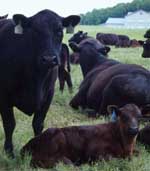To access the class
web site from Blackboard, click on “External Links” from the VETS 135
Blackboard home page.
Textbook
Clinical Anatomy &
Physiology for Veterinary Technicians, Second Edition
Thomas Colville & Joanna Bassert
Mosby, Inc.
ISBN 978-0-323-04685-5
Additional recommended book that contains many photographs and learning
exercises:
Clinical Anatomy &
Physiology Laboratory Manual for Veterinary Technicians
Thomas Colville & Joanna Bassert
Mosby, Inc.
ISBN 978-0-323-04684-8
Course Description
This course is an
introduction to the anatomy and physiology of common domestic animals with
emphasis on how the body’s normal structure and functions contribute to
health. A systems approach will be utilized with emphasis on the importance
of the interrelationships between systems in maintaining the health of the
animal. While the course content is designed to be general, with application
to most animal species, cats, cattle, dogs, and horses will be the major
species used as examples.
Using the course
outline as a guide, students should read and take notes on the appropriate
chapters/sections in the textbook and on the course web site
PRIOR to the subjects being covered in
class.
Course Objectives
It is the goal of the
instructor that at the completion of the course students will understand:
·
The
basic structure and function of the animal body and its parts
·
How the
animal body’s normal structures and functions contribute to health
·
The
importance of homeostasis to animal health
Course Prerequisites
There are no academic
prerequisites for the course, but fundamental knowledge of biology and
chemistry will be helpful.
Course Format
This is a
3-day-a-week lecture course. The lectures will be supplemented with internet
materials and anatomical models and specimens. Questions and discussion
during class are encouraged!
Examinations
Four regular
examinations worth 100 points each will be given at approximately 4 week
intervals. Each will cover only the material covered in class since the last
examination. The examinations will each consist of 50 multiple choice and
true-false questions. NO EXAMS WILL BE GIVEN EARLY. Students
are expected to take all examinations on the day they are scheduled. Make-up
examinations MAY be given at the discretion of the instructor
under the following conditions: (1) arrangements must be made for the
make-up examination prior to the scheduled exam date, and (2) the reasons
for missing the scheduled examination must be valid and extreme as judged by
the instructor.
Examination forms
will not be returned, but answer sheets can be picked up after all students
have taken each examination.
A 100 point
comprehensive final examination will be given at 9:00 am Wednesday December 15,
2010.
Examination Scores
Examination scores
will be posted on Blackboard as soon as they are available. They are also
available directly from the instructor via e-mail or in person at his
office. Be prepared to show a picture ID upon request.
Grading System
The highest 4 scores
from the regular examinations, the optional writing assignment and the
final examination will be used to determine grades. Grades will be
earned according to the following percentages:
90 - 100% (360 -
400 points) = A –
Outstanding work
80 - <90% 320
- 359 points) = B –
Above average work
70 - <80% 280
- 319 points) = C –
Average work
60 - <70% 240
- 279 points) = D –
Below average work
<60% 0 - 239
points) = F –
Failing
All questions
regarding exam scores must be brought to the attention of the instructor
within 7 days of the time scores are posted for each exam. No adjustments of
scores will be made after that.
NOTE: Any student
whose highest 4 scores for the semester are
within one percentage point (4 points) of a higher grade who turns in a
glossary of anatomy & physiology terms that is sufficiently complete as
judged by the instructor by 5:00 pm Friday December 10, 2010, will
earn the higher grade. Note: Glossaries can be sent to the instructor via
e-mail. A return e-mail will be sent confirming receipt of the glossary.
Only glossaries received by the instructor by the above deadline will count.
Electronic
Communication Devices
Out of courtesy to
the rest of the class, set all electronic communication devices on silent
mode during
class. During examinations, any student observed sending or receiving
messages of any kind, or listening to any device through an earpiece will be
judged to have violated the College of Agriculture, Food Systems and Natural
Resources Honor System and dealt with accordingly.
Academic Honesty
The College of Agriculture, Food
Systems, and Natural Resources recognizes the ability of its students to
govern themselves as mature individuals. The Honor System has been
functioning in the college since 1955 and provides students with a method of
self-government during examinations. All students who are enrolled in
College of Agriculture, Food Systems, and Natural Resources courses are
required to uphold the Honor System. For more information visit
http://www.ag.ndsu.edu/academics/honor.htm
In addition, all work in this course must be completed in a manner consistent with
NDSU University Senate policy, Section 335: Code of Academic Responsibility
and Conduct. The policy can be found at:
http://www.ndsu.edu/policy/335.htm
Students
With Special Needs
Students who have disabilities or
special needs that might affect their performance in this class are
encouraged to visit the NDSU Disabilities Services Office and then speak with the
instructor early in the semester. For information about the NDSU
Disabilities Service Office visit
http://www.ndsu.edu/disabilityservices/
NDSU Emergency Action Guide





